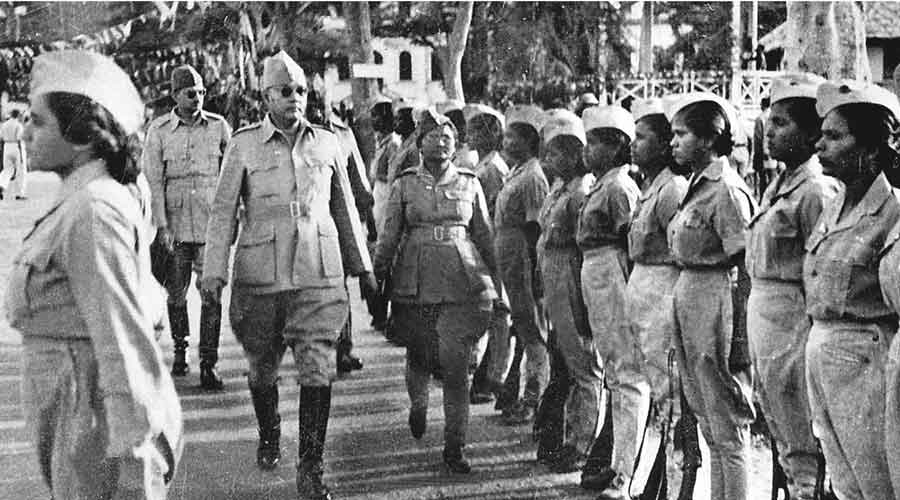
Who was Subash Chandra Bose or Neta ji?
Whenever we hear the name Subash Chandra Bose, the first thing that comes to mind is his famous saying, “Tum Mujhe Khoon do main tumhe Azadi Dunga.”
In Cuttack, Orissa, on January 23, 1897, Netaji Subhash Chandra Bose was born to Janaki Nath Bose and Prabhavati Devi. Subhash was the tenth child in a family of eight brothers and six sisters. His father, Janaki Nath Bose, had the title of “Rai Bahadur” and was a wealthy and prominent lawyer in Cuttack. Later on, he joined the Bengal Legislative Council.
Subhash Chandra Bose excelled in school. He graduated from the Presidency College in Calcutta with a B.A. in philosophy. Swami Vivekananda’s teachings had a significant impact on him, and as a young man, he was well-known for his hunger for his country. Bose gained prominence as a rebel Indian in the eyes of the government after an incident in which he physically assaulted his professor (E.F. Otten) in response to his racist remarks. His father sent Netaji to England to take the Indian Civil Service Examination because he wanted him to work in government. Bose had the highest English scores and came in fourth. But due to a strong desire to participate in the liberation fight, he resigned from the prestigious Indian Civil Service in April 1921 and returned to India. Bose was detained and jailed in December 1921 for planning a boycott of the events honoring the Prince of Wales’s visit to India.
While living in Berlin, he met and fell in love with Emily Schenkl, an Austrian. In a covert Hindu ceremony, Bose and Emily were united in marriage in 1937. Emily gave birth to their daughter Anita in 1942. Bose left Germany in 1943, shortly after the birth of their daughter, to return to India.
Political career of Subhash Chandra Bose
Involvement of Bose with the Indian National Congress
Chittaranjan Das, a prominent Congressman in Calcutta, served as Subhash Chandra Bose’s immediate supervisor. In 1922, Chittaranjan Das and Motilal Nehru created the Swaraj Party after leaving Congress. Bose looked forward to Chittaranjan Das as his political mastermind. He was the founder of the journal “Swaraj,” the editor of Das’ publication “Forward,” and the CEO of the Calcutta Municipal Corporation during Das’ term as mayor.
The Calcutta students, young, and laborers greatly benefited from Subhash Chandra Bose’s education. He developed as a compelling and fiery young figure in his ardent quest for India to become an independent, federal, and republican nation. Congress highly esteemed him for his exceptional organizational development skills. During this period, he spent several terms in prison for his nationalist actions.
Conflict of Bose with the Congress
The old and new members of the Congress disagreed in 1928 at the Guwahati Session of the Congress. The elderly leaders supported “India’s dominion status within the British authority,” while the younger leaders favored “full self-governance and without any compromise.”
Subhash Chandra Bose decided to leave the party in 1939 due to growing and irreparable conflicts between the aggressive Bose and the moderate Gandhi. Later that year, he founded the Forward Bloc.
In his correspondences, he frequently expressed his contempt for the British and respect for their orderly way of life.
He spoke on the potential benefits of an independent India with Clement Attlee, Harold Laski, J.B.S. Haldane, Arthur Greenwood, G.D.H. Cole, and Sir Stafford Cripps during meetings with British Labor Party leaders and political theorists.
Establishment Of The INA (Indian National Army) by Bose
Bose fiercely disagreed with Congress’ choice to aid the British in World War II. Bose pleaded with Indians for their enthusiastic engagement to start a mass movement. When he declared, “Give me blood, and I will give you freedom,” there was a tremendous response, and the British quickly imprisoned him. He declared a hunger strike while in custody. Because of his declining health and their concern for violent outbursts, they freed him but placed him under home arrest.
Subhash made a prearranged getaway in January 1941 and took a detour through Peshawar to get to Berlin, Germany. He received the complete backing of the Germans in his endeavours and won Japan’s devotion.
After making a treacherous voyage back east, he eventually arrived in Japan, where he seized command of more than 40,000 men recruited from Singapore and other south-east Asian countries. He commanded his force, which he referred to as the “Indian National Army” (INA), in capturing the Andaman and Nicobar Islands from the British and renaming them Shaheed and Swaraj Islands. A temporary “Azad Hind Government” had begun to run in the lands taken.
Death of hero
Netaji inexplicably vanished shortly after the retreat. According to reports, he returned to Singapore. He met with Field Marshal Hisaichi Terauchi, the chief of the military operations in South East Asia, who arranged for him to fly to Tokyo. On August 17, 1945, he boarded a Mitsubishi Ki-21 heavy bomber at Saigon Airport.
The aircraft crashed shortly after takeoff the next day after a night stop in Taiwan. Witnesses claim that Bose suffered severe third-degree burns during the incident. On August 18, 1945, he died due to his injuries. On August 20, he was cremated at Taihoku Crematorium, and his remains were interred at Tokyo’s Renk.ji Temple of Nichiren Buddhism.
In the Popular Media
Many documentaries, TV shows, and films have been created about Netaji’s life. Shyam Benegal’s 2004 biography ‘Netaji Subhas Chandra Bose: The Forgotten Hero’ gained widespread critical praise in India and at foreign film festivals.
Conclusion
As we all know, today is January 23, the birthday of the legendary man known as Netaji means “Respected leader”. He founded the INA (Indian National Army). Don’t forget the real hero who sacrificed their life for today’s freedom after slavery.
Jai hind
Do follow us on Instagram: Viralkida , Twitter: @Viralkida1, Facebook: The Volunteers Group